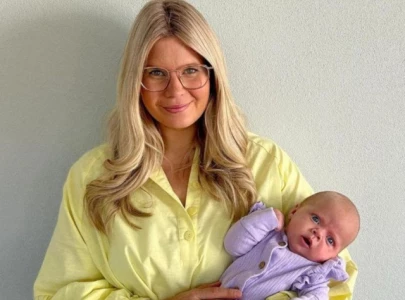
Pakistan leads with highest number of breast cancer patients across Asia
Although this is harrowing, all hope is not lost as new research emerges which suggests that a cure for cancer may be on the horizon. For decades now, in the hopes of understanding its nature, scientists have been trying to unravel similarities between tumours and women’s placenta, the organ that supports the growth of life within the womb. This is because placenta is an organ which grows within a few months from a few cells, weighs approximately two pounds and provides the developing embryo with oxygen and nourishment in a foreign environment which is similar to the molecular origin of tumours that grow and nourish the cells in a foreign environment.
Protein found in malaria could help stop cancer
A team of scientists found this similarity serendipitously in the unlikeliest of places. Professor Ali Salanti at Faculty of Medical Health and Sciences, University of Copenhagen, whose team was researching a malaria parasite, plasmodium falciparum, in hopes of finding a vaccine that could prevent death during pregnancy, stumbled upon the discovery that the carbohydrate molecule, oncofetal chondroitin sulphate, found on the surface of placenta to which the malaria parasite attaches itself in order to spread infection is the same as that borne by cancer cells. This resemblance has tremendous implications as it can allow malarial protein cells to be used as a vector in mounting an isolated attack on cancer cells. In collaboration with cancer researcher Mads Daugaard from the University of British Columbia, Canada, Professor Salanti’s team is striving to devise a Trojan horse attack on cancer cells, where the cancer killing drug could be smuggled inside the body using the same protein molecule where it would target only the cancer cells and spare the carnage of healthy cells.
Sausages, bacon and other processed meats can cause cancer: WHO
What may appear simple has numerous intricacies about its execution. The protein that the malaria parasite uses to ‘dock’ on to placenta required artificial synthesis in a laboratory. A protein called VAR2CSA was used to deliver toxin directly on to cancer cells, which destroyed only the effected cells believing them to be the component of placental tissue. The hypothesis was tested in mice subjects that had been infected with three human tumours, prostate cancer, non-Hodgkin’s lymphoma (NHL) and metastatic bone cancer or breast cancer, and the outcomes were generally positive.
Trials and tribulations
The first group of mice that was implanted with NHL showed that following treatment, the size of tumour reduced to a quarter in comparison to that of mice in control group (that did not receive the test drug). For the group implanted with prostate cancer, total disappearance of tumour was seen in two of the test subjects a month following the treatment with the anti-cancer toxin. Finally, in the group of mice transplanted with metastatic bone cancer, drastic improvement in survival rate was seen as five out of six test subjects survived up to eight weeks as opposed to control group in which none survived this late into drug trials. Three doses showed the promise of arresting cell growth while in some cases shrinking of tumour also occurred.
One in two men at risk of developing cancer: specialist
However, there is still a long way to go as the trials now need successful replication in human subjects, an environment hundred folds more complex than that of mice which comes with its own set of challenges. That being said, it is essential to understand how the test substance will behave in the human body and what adverse events will manifest themselves owing to such complexity. “The earliest possible test scenario is in four years’ time. The biggest questions are whether it’ll work in the human body, and if the human body can tolerate the doses needed without developing side effects. But we’re optimistic because the protein appears to only attach itself to a carbohydrate that is only found in the placenta and in cancer tumours in humans,” says Professor Salanti. This treatment is estimated to be given in six-month busts in tandem with other chemotherapy drugs. On successful completion of human trials, it will be made available to general masses, save pregnant women, for obvious reasons.
The team of researchers has indeed embarked on a nerve-wracking quest of racing against time as statistics show that despite new pharmaceutical advances, more and more people are now at risk of succumbing to cancer at some point in their life. With such discoveries coming to light, it can be said that present times do not look as gloomy as the past when treating cancer was much like battling shadows. Wining comes with knowing and knowing cancers at molecular level is our best bet at finding a definitive panacea for defeating this cellular kraken.
Batool Kazim is a UK-based pharmacist


1727778647-0/diddy-(16)1727778647-0-165x106.webp)

1732014631-0/BeFunky-collage-(71)1732014631-0-165x106.webp)
1732012115-0/Untitled-design-(14)1732012115-0-270x192.webp)




1732011525-0/Express-Tribune-(8)1732011525-0-270x192.webp)






COMMENTS
Comments are moderated and generally will be posted if they are on-topic and not abusive.
For more information, please see our Comments FAQ